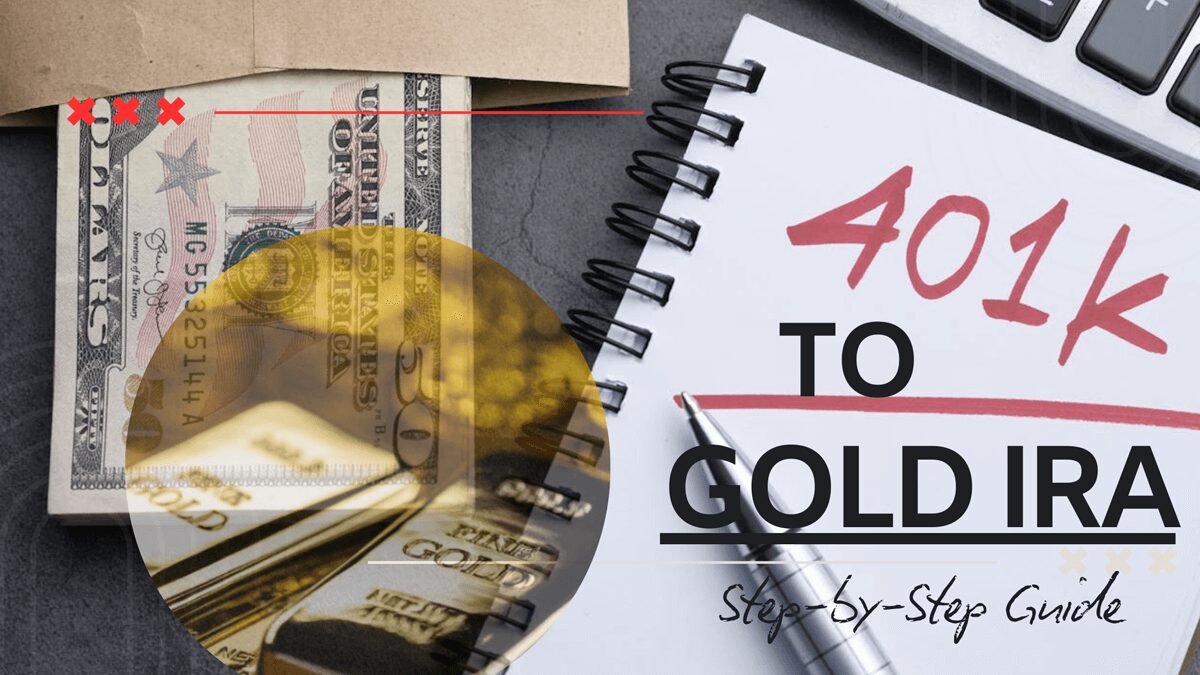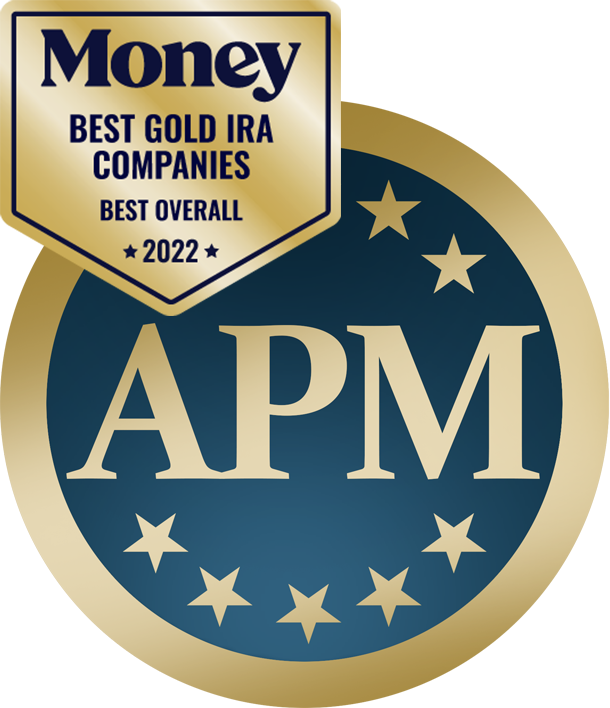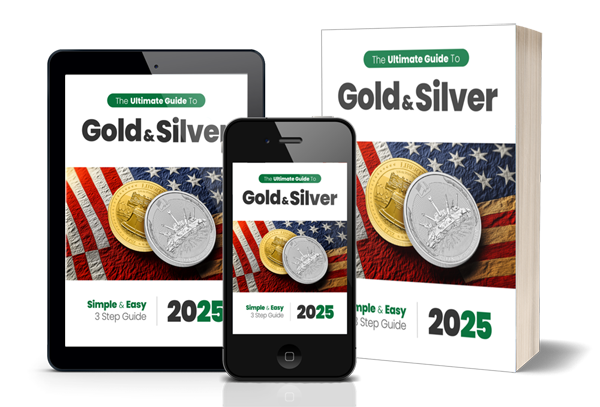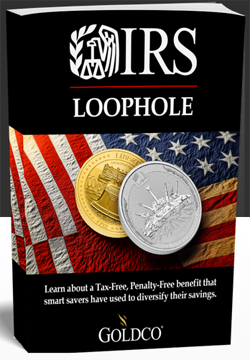Transferring your 401(k) into a Gold Individual Retirement Account (IRA) can be a strategic move to diversify your retirement portfolio and hedge against economic volatility.
This comprehensive guide will walk you through the process step-by-step on how to transfer 401k to a Gold IRA and address common considerations and questions.
Let’s start by explaining what a Gold IRA is.
What Is a Gold IRA?
15 seconds
15 seconds
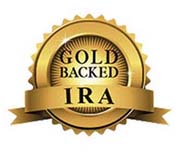 A Gold IRA (Individual Retirement Account) is a type of self-directed IRA that allows investors to hold physical gold and other precious metals as part of their retirement portfolio.
A Gold IRA (Individual Retirement Account) is a type of self-directed IRA that allows investors to hold physical gold and other precious metals as part of their retirement portfolio.
Unlike traditional IRAs, which typically contain stocks, bonds, and mutual funds, a Gold IRA is specifically designed for those who want to hedge against economic volatility, inflation, and currency devaluation by investing in tangible assets like gold, silver, platinum, and palladium.
These accounts are managed by custodians who specialize in self-directed IRAs and ensure compliance with IRS regulations regarding precious metal investments. To learn more, check out this video about the benefits of investing in a precious metals IRA:
If you’re ready to take action
Request the Ultimate Gold & Silver Guide and learn how to protect your retirement savings with precious metals. *Shipping costs covered.
Tax Deferred Investment With a Gold IRA
A Gold IRA operates under the same tax-advantaged structure as Traditional and Roth IRAs. Contributions to a Traditional Gold IRA may be tax-deductible, with taxes deferred until withdrawal, while Roth Gold IRAs are funded with after-tax dollars, allowing for tax-free withdrawals in retirement.
However, the IRS has strict rules regarding eligible gold investments—only certain coins and bars that meet purity standards (such as 99.5% pure gold) can be held in the account.
 Popular choices include:
Popular choices include:
- – Gold or Silver American Eagles
- – Gold or Silver American Eagles
- – Gold or Silver American Buffalos
- – Gold or Silver Canadian Maple Leafs
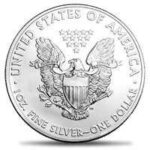
- – Australian Striped Marlin
- – Gold or Silver Austrian Philharmonics
- – Silver America the Beautiful Coins
- – Canadian Silver Soaring Eagle
- – Canadian Silver Eagle With Nest
- – And approved gold bars from recognized refiners
Tax Rules for Gold IRAs in 2025
Tax rules are crucial to know when investing in your future and retirement. Let’s start by taking a look at the different types of Gold IRAs. Here’s what distinguishes a Traditional Gold IRA and a Roth Gold IRA:
Traditional Gold IRA
- Contributions: Made with pre-tax dollars, potentially tax-deductible
- Taxation: Earnings grow tax-deferred; withdrawals during retirement are taxed as ordinary income
- Required Minimum Distributions (RMDs): Mandatory withdrawals begin at age 73
Roth Gold IRA
- Contributions: Made with after-tax dollars; no immediate tax deduction
- Taxation: Earnings grow tax-free; qualified withdrawals are tax-free
- RMDs: No RMDs during the account holder’s lifetime
Contribution Limits for 2025
There are limitations to what you can contribute to your IRA in a year. As for 2025, here’s what you can expect:
- Under Age 50: Up to $7,000
- Age 50 and Over: Up to $7,500 (including a $1,000 catch-up contribution)
IRS-Eligible Precious Metals
The IRS mandates specific purity standards for metals held in a Gold IRA:
- Gold: Minimum 99.5% purity
- Silver: Minimum 99.9% purity
- Platinum and Palladium: Minimum 99.95% purity
Only certain bullion coins and bars meeting these standards are permitted. Collectibles and non-approved metals are prohibited. Your Gold IRA company will help you find and choose IRA-eligible coins and bars.
Storage Requirements
Physical metals in a Gold IRA must be stored in an IRS-approved depository. Personal possession or home storage is not allowed and can lead to taxes and penalties.
IRS-approved depositories include:
- – The Delaware Depository
- – Brinks Global Services
- – Texas Bullion Exchange
- – And more
Non-IRA metals can be stored at home in a safe vault or bank safety box. Just make sure your metals are insured.
Annual Gold IRA Fees
Fees can vary among custodians and may include account setup fees, annual maintenance fees, storage fees, and seller’s fees. Here are the typical annual Gold IRA fees:
- – A one-time account setup fee of around $50 to $150. Many companies like Augusta Precious Metals waive this fee nowadays
- – Except for the setup fee, there is also an annual administrative or custodial fee, ranging from $50 to $150 depending on the account’s size
- – Lastly, storage fees are also charged by the depository ranging from $100 to $150 annually, depending on the amount of gold being stored and if you prefer segregated storage or non-segregated storage
Ensure you understand all associated costs before proceeding. Always ask your financial advisor or Gold IRA firm for help.
Distribution Limits and Withdrawal Age
We understand you want to know the distribution limits and withdrawal age when taking the step to transfer your 401k to a Gold IRA. Here are the distribution limits and withdrawal age:
- Early Withdrawals: Withdrawing from your Gold IRA before age 59½ typically incurs a 10% penalty plus regular income tax
- Required Minimum Distributions (RMDs): Starting at age 73, RMDs are mandatory for Traditional Gold IRAs. Roth IRAs do not require RMDs during the account holder’s lifetime
Additionally, you can read more about the tax rules in gold IRA tax rules for 2025.
If you’re ready to take action
Request the Ultimate Gold & Silver Guide and learn how to protect your retirement savings with precious metals. *Shipping costs covered.
401k vs Self-Directed IRA (SDIRA)
You might be wondering about the difference between a 401k and a self-directed IRA. Let’s take a look at that next.
A 401(k) plan offers limited investment options, prompting many investors to transfer assets into a self-directed IRA (SDIRA) for greater flexibility. Unlike traditional retirement accounts, an SDIRA allows investment in a wider range of assets beyond stocks, bonds, and mutual funds.
For example, while 401(k) plans typically include low-risk options like Guaranteed Investment Contracts (GICs) with minimal returns, an SDIRA provides access to diverse investments, including:
- Gold and other precious metals
- Real estate
- Venture capital and private equity investments
- Joint ventures and other business partnerships
- Raw or farm/ranch land
- Promissory notes
- And more.
(The only major restriction is on collectibles.) This broader selection helps investors pursue both short- and long-term financial goals more effectively.
How to Transfer a 401k to a Gold IRA
With the benefits of a SDIRA in mind, here is a step-by-step guide to transferring a 401k to a gold IRA:
✓ Assess Your Current 401(k) Plan
Eligibility: Determine if your 401(k) plan allows for rollovers into a self-directed IRA. This is typically possible after leaving the employer sponsoring the 401(k) plan.
✓ Choose a Reputable Gold IRA Custodian
Research: Select a custodian or Gold IRA company experienced in handling Gold IRAs. Look for transparency in fees, positive customer reviews, and a solid track record.
✓ Open a Self-Directed IRA Account
Account Setup: Work with your chosen custodian to establish a self-directed IRA, which allows for investments in alternative assets like physical gold.
✓ Initiate the Rollover Process
Direct Rollover: Coordinate with your 401(k) plan administrator to transfer funds directly to your new Gold IRA. This method avoids taxes and penalties associated with indirect rollovers.
✓ Select IRS-Approved Precious Metals
Eligible Metals: Ensure the gold you purchase meets IRS standards, such as a minimum purity of 99.5%. Common choices include American Gold Eagle coins and Canadian Gold Maple Leaf coins.
✓ Arrange Secure Storage
Approved Depository: Your custodian will facilitate storage of your gold in an IRS-approved depository. Storing gold at home is not permitted and can lead to penalties.
What to Think of When Transferring Your 401(k) to a Gold IRA - Checklist
When rolling over your 401(k) to a Gold IRA, several key considerations must be taken into account to ensure a smooth and compliant transition:
- Eligibility: First, you need to determine whether your current 401(k) plan allows rollovers to a self-directed IRA that can hold physical gold. Not all plans permit this, so checking with your plan administrator is crucial
- Work With Gold IRA Specialists: Next, you should choose a reputable Gold IRA custodian who specializes in handling precious metals investments and adheres to IRS regulations
- Ask About Taxes: Additionally, it's important to understand the tax implications—while direct rollovers from a 401(k) to a Gold IRA are generally tax-free, an indirect rollover may trigger taxes and penalties if not completed within 60 days
- Type of Precious Metals: You must also consider the types of gold allowed in an IRA, as the IRS has strict requirements regarding purity and approved storage facilities
- Fees: Lastly, evaluate the costs involved, including setup fees, storage fees, and any potential markup on gold purchases
- Buyback Program: Make sure your Gold IRA company offers a buyback program when you want to liquidate your precious metals
By carefully considering these factors, you can make an informed decision that aligns with your retirement goals.
Transfer 401k to Gold IRA: FAQ
If you feel you have more questions, let’s answer some common questions about transferring your 401k to a Gold IRA.
Why invest in a Gold IRA?
A Gold IRA offers portfolio diversification and protection against economic uncertainties. Investing in precious metals can help:
- Hedge against inflation and a weaker dollar
- Reduce stock market volatility
- Safeguard against economic and geopolitical instability
- Offset financial impacts of crises
- Enhance portfolio diversification
- Secure private ownership of your wealth
By adding gold to your retirement strategy, you can strengthen your financial future.
Can I roll over my current employer's 401(k) into a Gold IRA?
Typically, rollovers are only allowed from 401(k) accounts with previous employers. However, some plans may permit in-service rollovers. Consult your plan administrator for details.
Are there penalties for rolling over a 401(k) to a Gold IRA?
If done correctly via a direct rollover, there are no taxes or penalties. Indirect rollovers must be completed within 60 days to avoid penalties.
What types of retirement accounts can be transferred to a Gold IRA?
You can transfer any type of retirement account, including a Traditional IRA, Roth IRA, 401(k), or other pension plans, to a Gold IRA as long as the account custodian or trustee allows it.
Here’s the complete list of transferable retirement accounts:
- Employer-sponsored 401(k)
- Self-directed 401(k)
- Traditional or Roth IRA
- TSP
- 403(b)
- 457(b)
- SEP IRA
What types of gold are eligible for a Gold IRA?
The IRS has specific requirements for the types of gold that can be held in a Gold IRA. Eligible gold includes certain coins and bars that meet minimum fineness standards. For example, American Gold Eagle coins and Canadian Gold Maple Leaf coins are commonly accepted.
Is a Gold IRA safe?
Without gold, is your IRA truly secure? Since gold often moves opposite to stocks and bonds, a Gold IRA provides diversification and a hedge against inflation. It’s also a store of value that stands alone from other assets. This reduces long-term risk, making it a smart addition to your retirement portfolio.
What precious metals can I invest in?
Gold, silver, platinum, and palladium are the four precious metals that can be invested in a Gold IRA as long as they are pure enough according to IRS standards.
You can mix multiple precious metals in a single account, in other words. An IRA holding any tangible precious metal investments is referred to as a “Gold IRA” in general.
Only a few carefully chosen businesses have the authorization to include particular cryptocurrency assets in IRAs. For IRA investments in cryptocurrencies, we advise BitIRA.
Is it expensive to have a Gold IRA?
No, compared to most retirement plans, gold IRA costs are typically substantially lower. Typically, the annual price is between $150 and $200. That would be less than 1% on an investment of $50,000, for instance.
Best Gold IRA Companies for 2025
To help you identify the best option for transferring your 401k to a Gold IRA, we have reviewed and rated the top 7 gold IRA companies in the industry:
- 1. Goldco: Best Overall Gold IRA Provider
- 2. Birch Gold Group: The Gold IRA Specialist
- 3. GoldenCrest Metals – Best for Trust & Integrity
- 4. Noble Gold: Most Personalized Service
- 5. Augusta Precious Metals: Best for High Income Investors
- 6. Colonial Metals Group – Most Transparent Fee Structure
- 7. American Hartford Gold: Extensive Product Assortment
If you’re ready to take action
Request the Ultimate Gold & Silver Guide and learn how to protect your retirement savings with precious metals. *Shipping costs covered.


